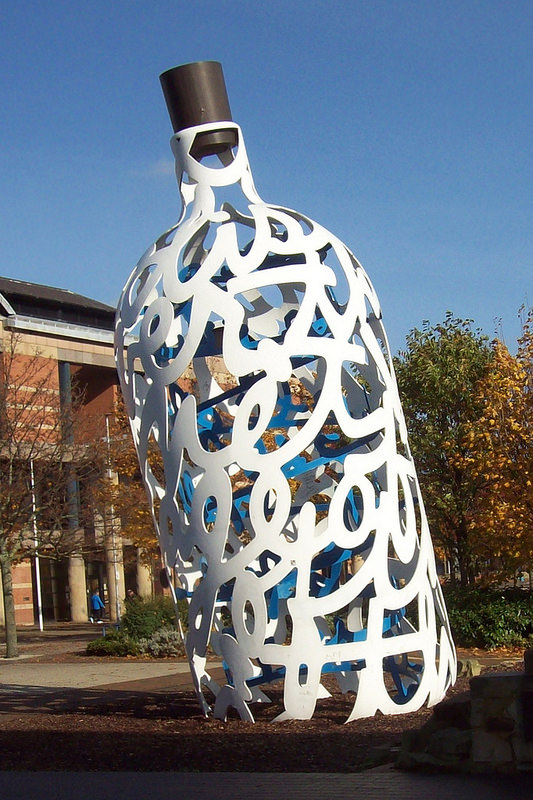It’s time the north east abandoned 80s property-led regeneration models that parachuted in metropolitan art and take strength instead from home-grown artists, says Natasha Vall
Something exciting is happening in the arts world on Teesside. In October, the Middlesbrough Institute of Modern Art (mima) will launch an exhibition entitled “localism”, a project that promises to tell the story of art in the town from the early nineteenth century to the present time. The exhibition is to be made by the public who will reconstruct Middlesbrough’s artistic heritage through a serious of workshops and interactive events.
These hope to reveal a cultural inheritance that has too often been overlooked in the easy caricature of the blighted industrial town. But this is not an exercise in whitewashing the past. The exhibition aims to engage the region’s industrial heritage too: as well as Christoher Dresser’s design and Linthorpe pottery the exhibition will cast the lens back to the 1930s to celebrate the work of the Boosbeck Industries and the town’s international bridge-building prowess.
It’s a brave move. Localism has rarely enjoyed prominence in an art world where metropolitan connoisseur judgement has long been the arbiter of taste and legitimacy. But this is more than an audacious and provocative exhibition strategy. Localism represents a decisive shift away from the direction of travel for culture-led regeneration in the north over the last 35 years. Mima’s self-conscious ambition to “dig where we stand” abandons an approach that emerged in the 1980s, still with us today, that saw arts initiatives yoked to ‘enterprise’, new lifestyles and property regeneration across northern cities.

Bottle of Notes, outside Middlesbrough Institute of Modern Art (mima). Photograph by summonedbyfells under Creative Commons licence.
This was a time when politicians like Michael Heseltine were hailed for persuading recalcitrant Labour councils in the north of the benefits of the enterprise model of cultural regeneration after he inaugurated the 1984 Garden Festival in Liverpool. This presaged the building of the Millennium Dome and fed a growing appetite of central government for a radical overhaul of the northern industrial cities.
Here in the north east, Gateshead’s hosting of the Garden Festival in 1990 came to be seen as pivotal to the subsequent culture-led regeneration of Baltic Quays. By the end of the decade these interventions were roundly celebrated for transforming the “blighted” conurbations of the north beyond recognition.
Newspapers were filled with tales of northern cities rising as cultural phoenixes from the ashes of industry, with industrial landscapes vanquished to make way for gleaming new art galleries, post-modernist architecture and huge shopping malls. Although this was about as far from local heritage as it was possible to get, in the art world a new cadre of curators and directors was emerging that fed on the idea of the defunct industrial space. A deindustrial vista, especially one with a dramatic waterfront location, provided an ideal backdrop for flagship exhibitions and iconic installations.
In 1999, Anish Kapoor’s giant Tarantara, constructed inside the void of the Baltic Flour Mill, epitomised an approach that used art to signify the transformation of the space from shabby industrial to glossy cultural and commercial. Yet while critically acclaimed in the art world, the work and broader approach was starting to prompt local unease that local culture was being subjected to corporate colonisation.
Into the early 2000s, local commentators, followed quickly by academics, were beginning to ask if this approach actually worked. It’s still a moot point. Jobs in art galleries have certainly not compensated for the huge losses suffered in manufacturing. In many cases culture-led regeneration has been very superficial, with levels of deprivation thinly veiled by glossy facades, shopping centres and bombastic works of public art. That said, there were many caveats and, more significantly, institutions such as mima would not even be in existence without the funding that flowed from the culture as enterprise model of regeneration.
Let’s not overlook the success stories. When Liverpool won its capital of culture bid in 2008 there was a sense of optimism about how the city had tapped a long vein of popular culture aligned to a thriving music industry, too often overlooked in the caricature of a blight industrial port. In Gateshead the success of the SageGateshead is often said to be rooted in a rich heritage of regional folk song which has provided an international platform for northern music. Both these places take strength from the home-grown. Hopefully mima’s Localism can point to popular alternatives to parachuting in metropolitan art.
Natasha Vall is director of the Institute of Design, Culture and the Arts at Teesside University.
What do you think? Do you agree with her view that north east arts bodies should “dig where we stand”? Tell us your views in the comments section below – by clicking on the little speech bubble.
(Views expressed on our website and in our magazines and emails are not necessarily endorsed by The Northern Correspondent.)
